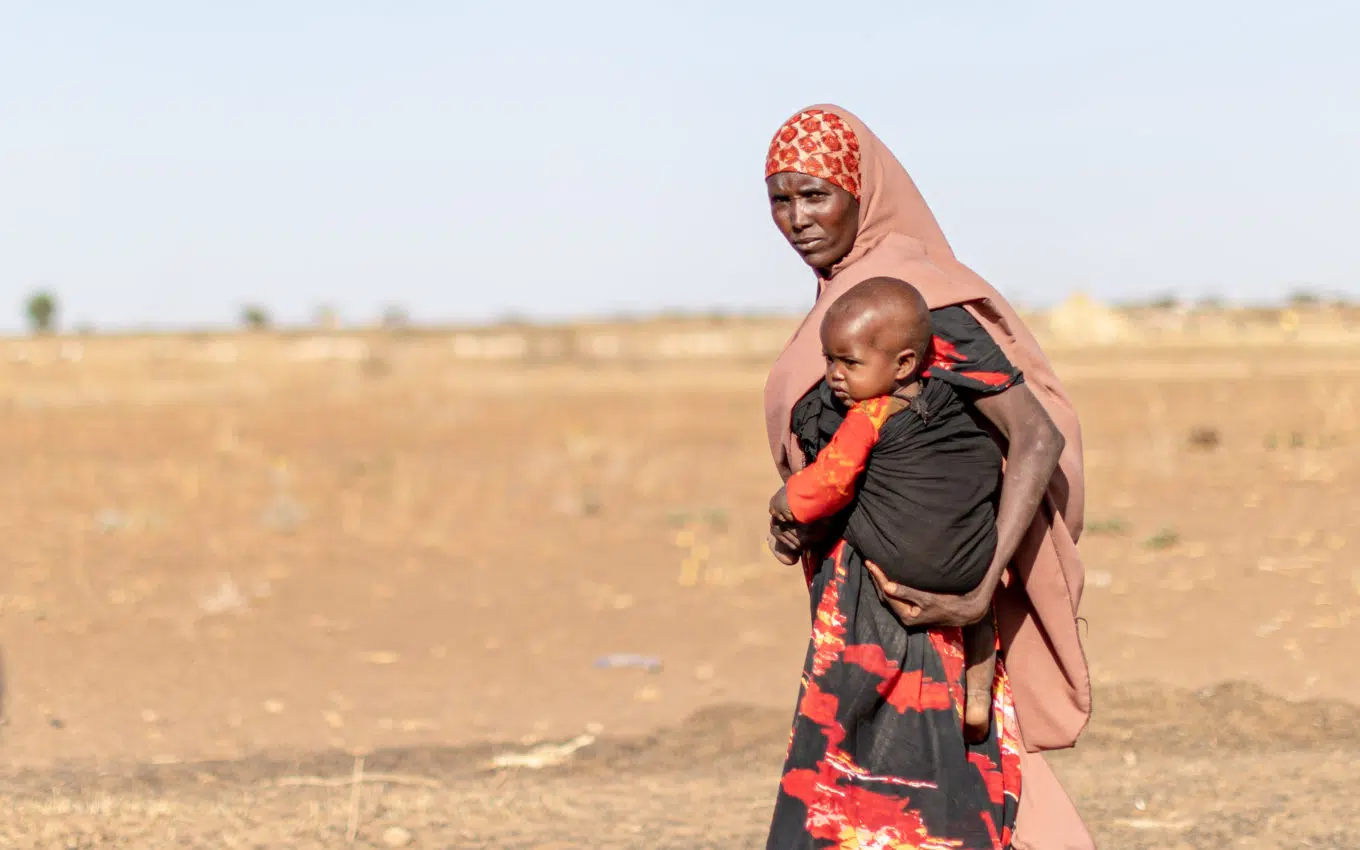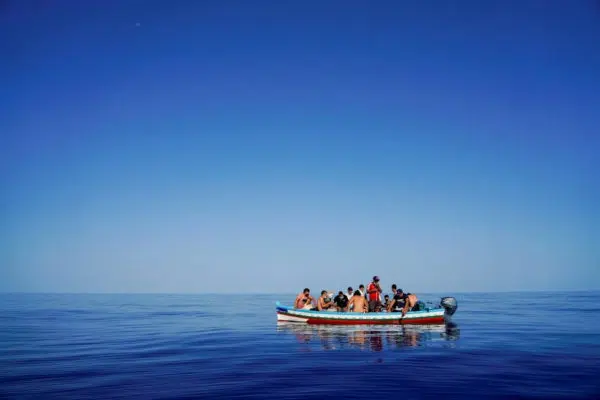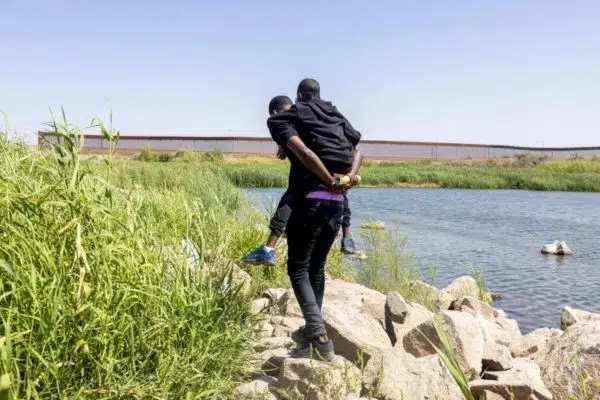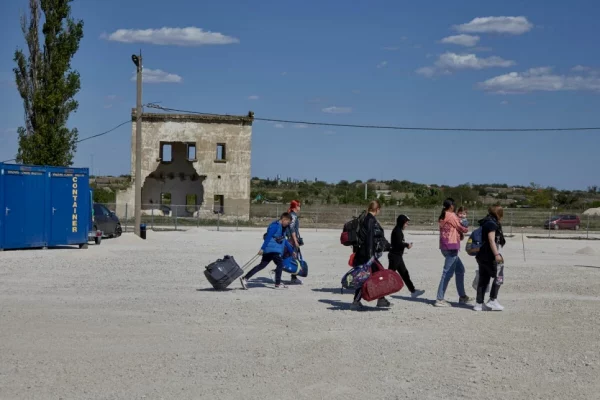
Thousands of families have been displaced due to recent climate change and droughts in Ethiopia’s Somali regions. ©UNHCR/Eugene Sibomana
Despite some signs of progress, the speed and scale of forced displacement is outpacing solutions for refugees
OTTAWA – Canada continues to be a global leader in refugee resettlement as the number of people forced to flee their homes has reached the highest level since records began, according to UNHCR, the UN Refugee Agency.
In 2021, Canada welcomed 20,400 refugees, more than double the 9,200 resettlement arrivals in the previous year, according to the annual Global Trends Report released by UNHCR today. That makes it three years running that Canada is the global leader in resettlement.
“There is very little to cheer about in this report, but one bright spot is Canada’s record of welcoming refugees,” said Rema Jamous Imseis, UNHCR’s Representative in Canada.
The report shows that following a decade-long upsurge in forced displacement, the number of people displaced by war, violence, persecution, and human rights abuses stood at 89.3 million by the end of 2021. This was up 8 per cent on a year earlier and well over double the figure of 10 years ago.
Since then, the Russian invasion of Ukraine – causing the fastest and one of the largest forced displacement crises since World War II – and other emergencies, from Africa to Afghanistan and beyond, pushed the figure over the dramatic milestone of 100 million.
“These unprecedented levels of forced displacement must be a wakeup call for the international community. Behind these staggering statistics are human stories of loss, fear and desperate searches for safety,” Jamous Imseis said.
The United Nations High Commissioner for Refugees, Filippo Grandi, said the trend can be only reversed by a new, concerted push towards peacemaking.
“Either the international community comes together to take action to address this human tragedy, resolve conflicts and find lasting solutions, or this terrible trend will continue,” Grandi said.
Last year was notable for the number of conflicts that escalated and new ones that flared; 23 countries, with a combined population of 850 million, faced medium or high-intensity conflicts, according to the World Bank.
Meanwhile, food scarcity, inflation and the climate crisis are adding to people’s hardship, stretching the humanitarian response just as the funding outlook in many situations appears bleak.
The number of refugees rose in 2021 to 27.1 million. Arrivals climbed in Uganda, Chad and Sudan among others. Most refugees were, once again, hosted by neighbouring countries with few resources. The number of asylum seekers reached 4.6 million, up 11 per cent.
Last year also saw the 15th straight annual rise in people displaced within their countries by conflict, to 53.2 million. The increase was driven by mounting violence or conflict in some places, for example Myanmar. The conflict in Ethiopia’s Tigray and other regions has spurred the flight of millions within the country. Insurgencies in the Sahel drove fresh internal displacement, particularly in Burkina Faso and Chad.
The speed and volume of displacement is still outpacing the availability of solutions for those displaced – including return, resettlement or local integration. Yet the Global Trends report also contained glimmers of hope. The number of refugee and IDP returns increased in 2021, returning to pre-COVID-19 levels, with voluntary repatriation having increased 71 per cent over the previous year, though numbers remained modest.
In 2021, Canada, Ecuador, France and Greece were able to significantly reduce their backlog of pending asylum claims.
“At a time when the world is facing unprecedented forced displacement, Canada’s robust asylum system is an example of the best practices in upholding the right to seek safety,” added Jamous Imseis.
Globally, the Netherlands (45,700), Canada (6,300) and France (3,700) reported the most refugees naturalizing in 2021.
And although the estimated number of stateless people grew slightly in 2021, some 81,200 acquired citizenship or had it confirmed – the biggest reduction in statelessness since the start of UNHCR’s IBelong campaign in 2014.
UNHCR 2021 Global Trends Report – key data:
- By May 2022, more than 100 million people were forcibly displaced worldwide by persecution, conflict, violence, human rights violations or events seriously disturbing public order.
- At end 2021, the figure was 89.3 million, comprising:
- 1 million refugees
- 3 million refugees under UNHCR’s mandate
- 8 million Palestine refugees under UNRWA’s mandate
- 2 million internally displaced people
- 6 million asylum seekers
- 4 million Venezuelans displaced abroad
- 1 million refugees
- Among refugees and Venezuelans displaced abroad in 2021:
- Low- and middle-income countries hosted 83 per cent
- Least Developed Countries provided asylum to 27 per cent of the total.
- 72 per cent lived in countries neighbouring their countries of origin.
- Türkiye hosted nearly 3.8 million refugees, the largest population worldwide, followed by Uganda (1.5 million), Pakistan (1.5 million) and Germany (1.3 million). Colombia hosted 1.8 million Venezuelans displaced abroad.
- Lebanon hosted the largest number of refugees per capita (1 in 8), followed by Jordan (1 in 14) and Türkiye (1 in 23). Relative to their national populations, the island of Aruba hosted the largest number of Venezuelans displaced abroad (1 in 6) followed by Curaçao (1 in 10).
- More than two thirds (69 per cent) came from just five countries: Syria (6.8 million), Venezuela (4.6 million), Afghanistan (2.7 million), South Sudan (2.4 million) and Myanmar (1.2 million).
- Globally, there were 6.1 million Venezuelan refugees, asylum seekers and migrants in 2021 (reported through the Coordination Platform for Refugees and Migrants from Venezuela).
- Asylum seekers submitted 1.4 million new claims. The United States of America was the world’s largest recipient of new individual applications (188,900), followed by Germany (148,200), Mexico (132,700), Costa Rica (108,500) and France (90,200).
- Solutions:
- 7 million displaced people returned to their areas or countries of origin in 2021, including 5.3 million internally displaced people and 429,300 refugees.
Additional information / supporting multimedia materials:
- UNHCR’s Global Trends report and an accompanying package of multimedia assets are available on our media page.
- Canada’s resettlement background information
- Canada’s asylum background information
Note: UNHCR’s Global Trends report is released in parallel with its annual Global Report, which reports on UNHCR programmes and activities to address the needs of all who are forced to flee, as well as the world’s known stateless populations.
For more information on this topic, please contact:
- In Ottawa/Montreal: Levon Sevunts, sevunts@unhcr.org, (613) 286-6975
- In Ottawa: Gisele Nyembwe, nyembwe@unchr.org, (613) 986-4300





